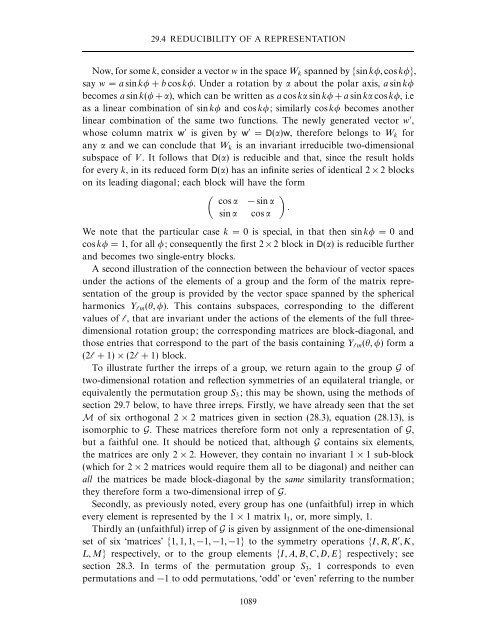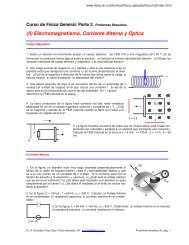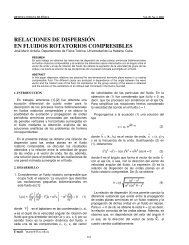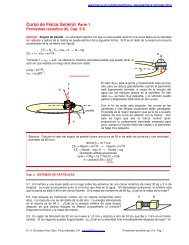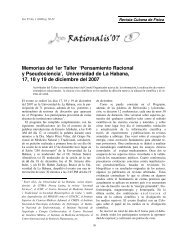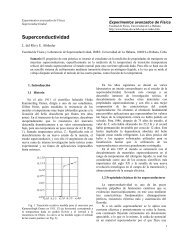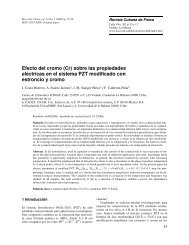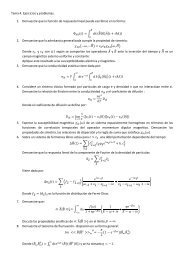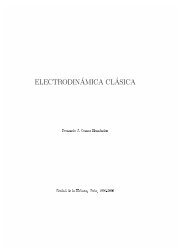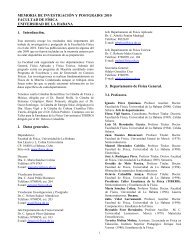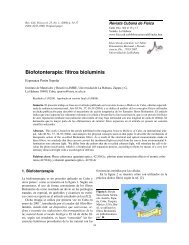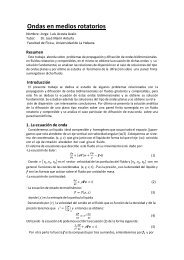Group theory
Group theory
Group theory
Create successful ePaper yourself
Turn your PDF publications into a flip-book with our unique Google optimized e-Paper software.
29.4 REDUCIBILITY OF A REPRESENTATIONNow, for some k, consider a vector w in the space W k spanned by {sin kφ, cos kφ},say w = a sin kφ + b cos kφ. Under a rotation by α about the polar axis, a sin kφbecomes a sin k(φ + α), which can be written as a cos kα sin kφ + a sin kα cos kφ, i.eas a linear combination of sin kφ and cos kφ; similarly cos kφ becomes anotherlinear combination of the same two functions. The newly generated vector w ,whose column matrix w is given by w = D(α)w, therefore belongs to W k forany α and we can conclude that W k is an invariant irreducible two-dimensionalsubspace of V . It follows that D(α) is reducible and that, since the result holdsfor every k, in its reduced form D(α) has an infinite series of identical 2 × 2 blockson its leading diagonal; each block will have the form cos α − sin α.sin α cos αWe note that the particular case k = 0 is special, in that then sin kφ = 0 andcos kφ = 1, for all φ; consequently the first 2×2 block in D(α) is reducible furtherand becomes two single-entry blocks.A second illustration of the connection between the behaviour of vector spacesunder the actions of the elements of a group and the form of the matrix representationof the group is provided by the vector space spanned by the sphericalharmonics Y m (θ, φ). This contains subspaces, corresponding to the differentvalues of , that are invariant under the actions of the elements of the full threedimensionalrotation group; the corresponding matrices are block-diagonal, andthose entries that correspond to the part of the basis containing Y m (θ, φ) form a(2 + 1) × (2 + 1) block.To illustrate further the irreps of a group, we return again to the group G oftwo-dimensional rotation and reflection symmetries of an equilateral triangle, orequivalently the permutation group S 3 ; this may be shown, using the methods ofsection 29.7 below, to have three irreps. Firstly, we have already seen that the setM of six orthogonal 2 × 2 matrices given in section (28.3), equation (28.13), isisomorphic to G. These matrices therefore form not only a representation of G,but a faithful one. It should be noticed that, although G contains six elements,the matrices are only 2 × 2. However, they contain no invariant 1 × 1 sub-block(which for 2 × 2 matrices would require them all to be diagonal) and neither canall the matrices be made block-diagonal by the same similarity transformation;they therefore form a two-dimensional irrep of G.Secondly, as previously noted, every group has one (unfaithful) irrep in whichevery element is represented by the 1 × 1 matrix I 1 , or, more simply, 1.Thirdly an (unfaithful) irrep of G is given by assignment of the one-dimensionalset of six ‘matrices’ {1, 1, 1, −1, −1, −1} to the symmetry operations {I, R, R , K,L, M} respectively, or to the group elements {I, A, B, C, D, E} respectively; seesection 28.3. In terms of the permutation group S 3 , 1 corresponds to evenpermutations and −1 to odd permutations, ‘odd’ or ‘even’ referring to the number1089


